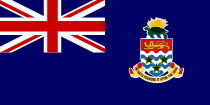CAYMAN ISLANDS
History

History
History
None other than the explorer Columbus was the first European to set foot on the Cayman Islands in May 1503. After his ship went completely off course during his fourth voyage to America, he discovered a few unknown islands. Columbus named them Las Tortugas, after the many turtles he found in this area. Shortly afterwards, the islands were renamed Lagartos, or 'crocodile'. The English then translated the name into Cayman Islands. By the way, crocodiles lived on the islands until the middle of the 19th century.
In 1670, the Cayman Islands were incorporated into the British Empire. Soon the first settlers appeared. They established cotton and sugar cane plantations. African slaves were employed here and did not gain their freedom until 1835. In addition, the islands served as a bunkering ground for passing ships.
After Jamaica's independence in 1962, the Cayman Islands became a British overseas territory. In 1972, the islands were granted greater autonomy. In the late 20th and early 21st centuries, the Cayman Islands gained a dubious reputation as a tax haven. In May 2013, treaties are signed to share tax information with a number of major European countries. Alden McLaughlin of the People's Progressive Movement has been Prime Minister since 2013. The next elections are scheduled for 2017. The 2017 elections produce an unclear result. A coalition government between the Progressives, members of the Cayman Democratic Party and independents is eventually agreed upon, taking office on 31 May 2017 with Alden McLaughlin as Prime Minister. Wayne Panton of the independents wins the 2021 election and has been Prime Minister since April 2021.
Sources
Elmar Landeninformatie
CIA - World Factbook
BBC - Country Profiles
Copyright: Team The World of Info